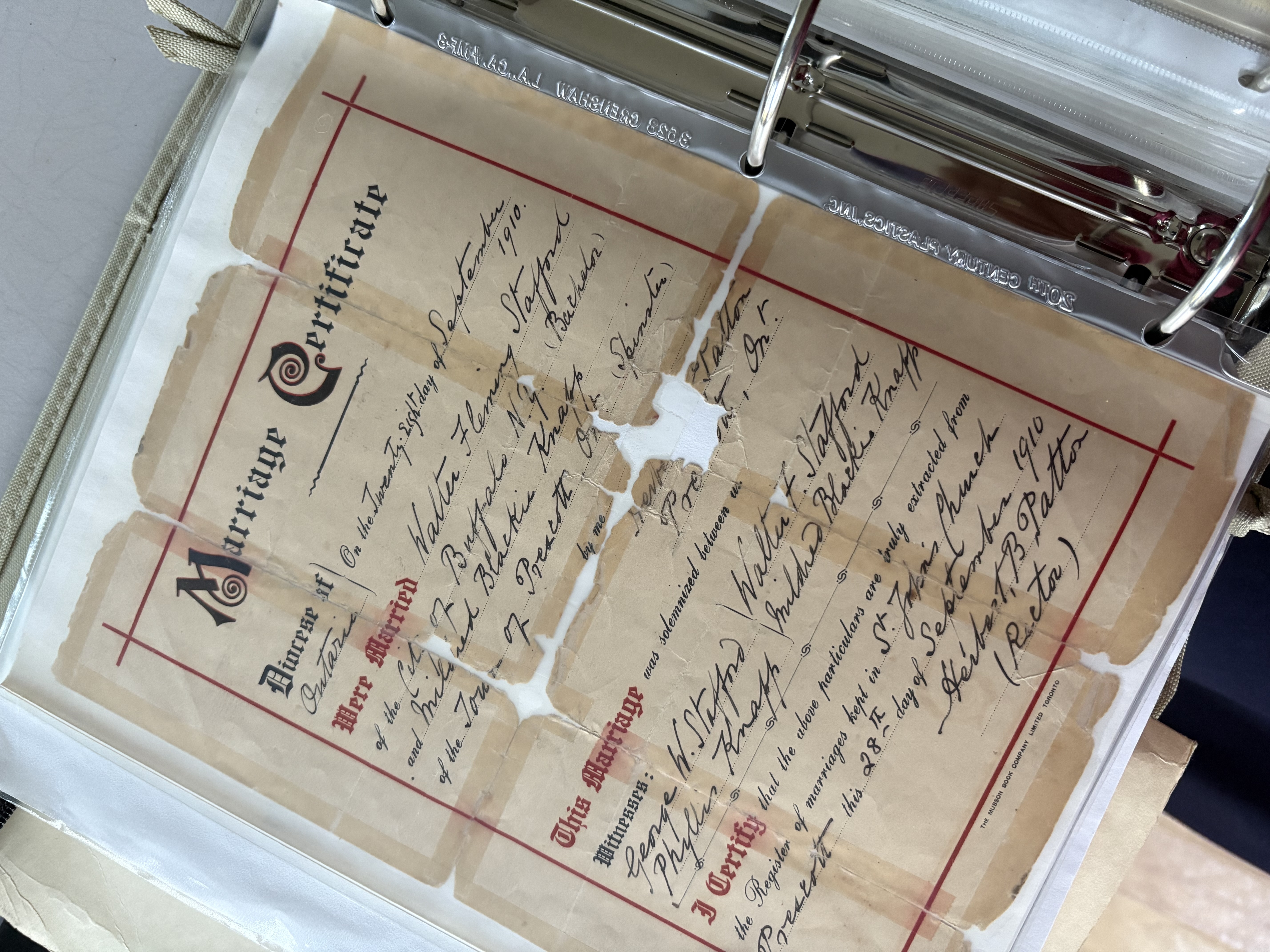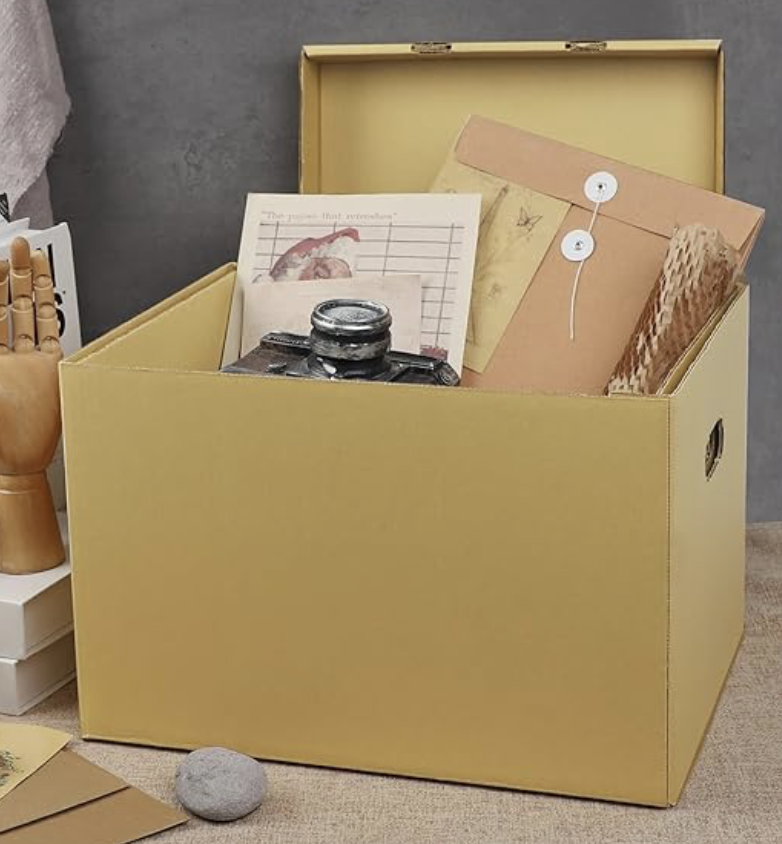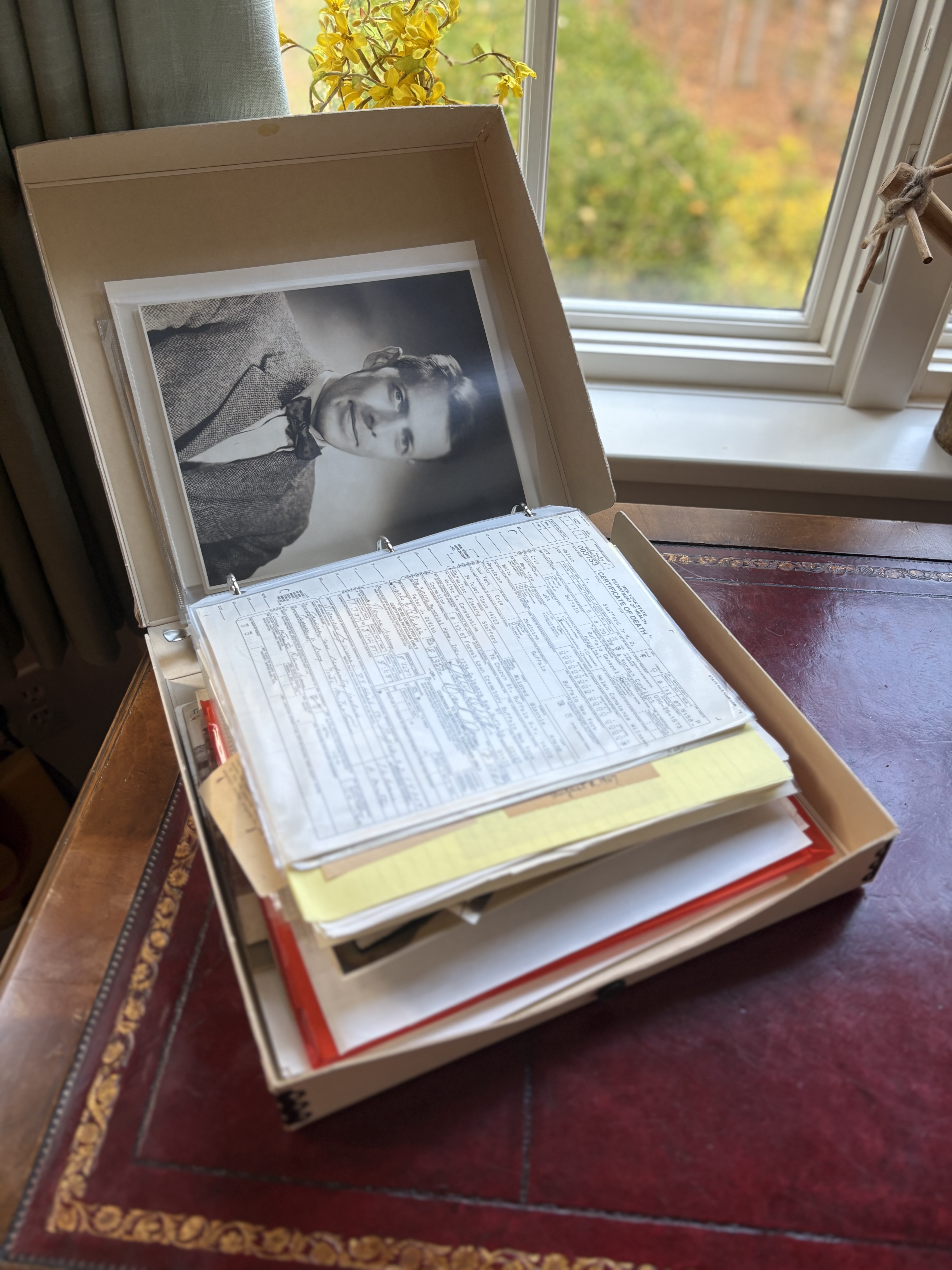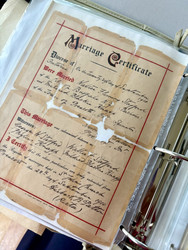Clutter vs Treasure
Posted by Connie Constantine on 9th Oct 2025
Everyone is telling us to declutter. What is Clutter? What is Treasure?
Don't throw out your primary source material. Organize it as you cull it. Clearly there will be things not worth keeping, but some will come together to tell a story. And it might be quite a surprise.
Create a Muniment Room. Or create a muniment box. Most of us do not have generations of material that we have been left by those who came before. Those who still live in their ancestral home in their ancestral country have lots more and need more space.
Muniment Room: Merriam-Webster.com:
A storage room for preservation of family and sometimes official or parochial records, papers, notebooks.
What is in your "muniment room"? Is it your grandmother's letters, scrapbooks, or as my mother called them, her memory books? What clues do we find that help us tell our stories? These leavings were left with intention. What was that intention? What did they want us to know? These things were important to those who left them. What can we learn from them?
This is where the fodder for our stories can be found.
I am well aware that some things were destined for the wastebasket and never got there. You can sort those things out. You do not have to keep everything! Your muniment box should not resemble a junk drawer. When you come across something that you might want to discard, ask yourself if it has a story or adds to another story. Take a picture, just in case, write what you know, and discard it. You can keep the stories and primary source material without keeping the actual item.
Sometimes the people we are trying to leave our stories for don't seem to be interested, or are so involved in their own lives that they don't have the time or the space for our stories. That is all the more reason to find a way to save them and pass them down. The day will come when they will appreciate them or will realize what they have missed.
If you don't pass these on, they will end with you. For some things that is appropriate. Some need to be passed on as great stories, others as cautionary tales.
At the same time that you are pulling together your primary source material, organize it and share it.
Think about what you want to write about and organize with those things in mind: favorite recipes; favorite places; favorite people; favorite trips. Most of us have all of those things. Sort into files with those markings - in pencil, so they can be easily changed, as they will, undoubtedly, need to be. Your organization methods will change as you discover more and more potential stories. Start with a theme or a person or a place. Sort into piles, putting like with like.
Organizing your material is a gift to those coming after you. I will give you some links to make it a bit easier and less daunting. There are many tools for the purpose of telling your story and caring for your information. I intend to provide options, but not rules. You do what works for you.
Keep your stuff safe - use sheets protectors. Samsill 50 Pack Heavy Duty Sheet Protectors
 These are to keep your primary source material - letters, photos, and such protected. Unfold the letters, making sure that they do not crack. Some people are better than others at reading the old handwriting. I have found that I am pretty good at that. So I am glad to help, if needed. You can also enhance the handwriting by taking a cell-phone photo and adjusting it to darken the "ink" and enlarge the writing. There are little tricks to reading the old letters. I find it particularly satisfying to successfully decipher an old letter. I then put these in archival sleeves and never refold them.
These are to keep your primary source material - letters, photos, and such protected. Unfold the letters, making sure that they do not crack. Some people are better than others at reading the old handwriting. I have found that I am pretty good at that. So I am glad to help, if needed. You can also enhance the handwriting by taking a cell-phone photo and adjusting it to darken the "ink" and enlarge the writing. There are little tricks to reading the old letters. I find it particularly satisfying to successfully decipher an old letter. I then put these in archival sleeves and never refold them.

File folders:
I keep the sheet protectors in file folders - like with like.
Archival file folders: https://amzn.to/4nt8v59
Hanging file folders:https://amzn.to/46NOoaC
Boxes:
Some things, probably most things, do not need to be kept in archival boxes. Use plastic boxes https://amzn.to/4nyatRW with hanging file folders. https://amzn.to/489VvN5
ArchivalStorage Boxes - these work really well to organize and contain the primary source material that needs extra care - LINECO - Archival Storage boxes. https://amzn.to/46QmcnR

https://amzn.to/4gKxhuY
I love these archival binders. These look great on a shelf and are archivally safe. The little things, the ephemera, won’t fall out either! Organize each family branch or place or subject in its own binder box. These will hold your archival sleeves and are great for keeping your written stories about the primary source materials and genealogy charts to keep all of your people straight.

You will have to decide what you need to contain your material, but I use all of these things.

